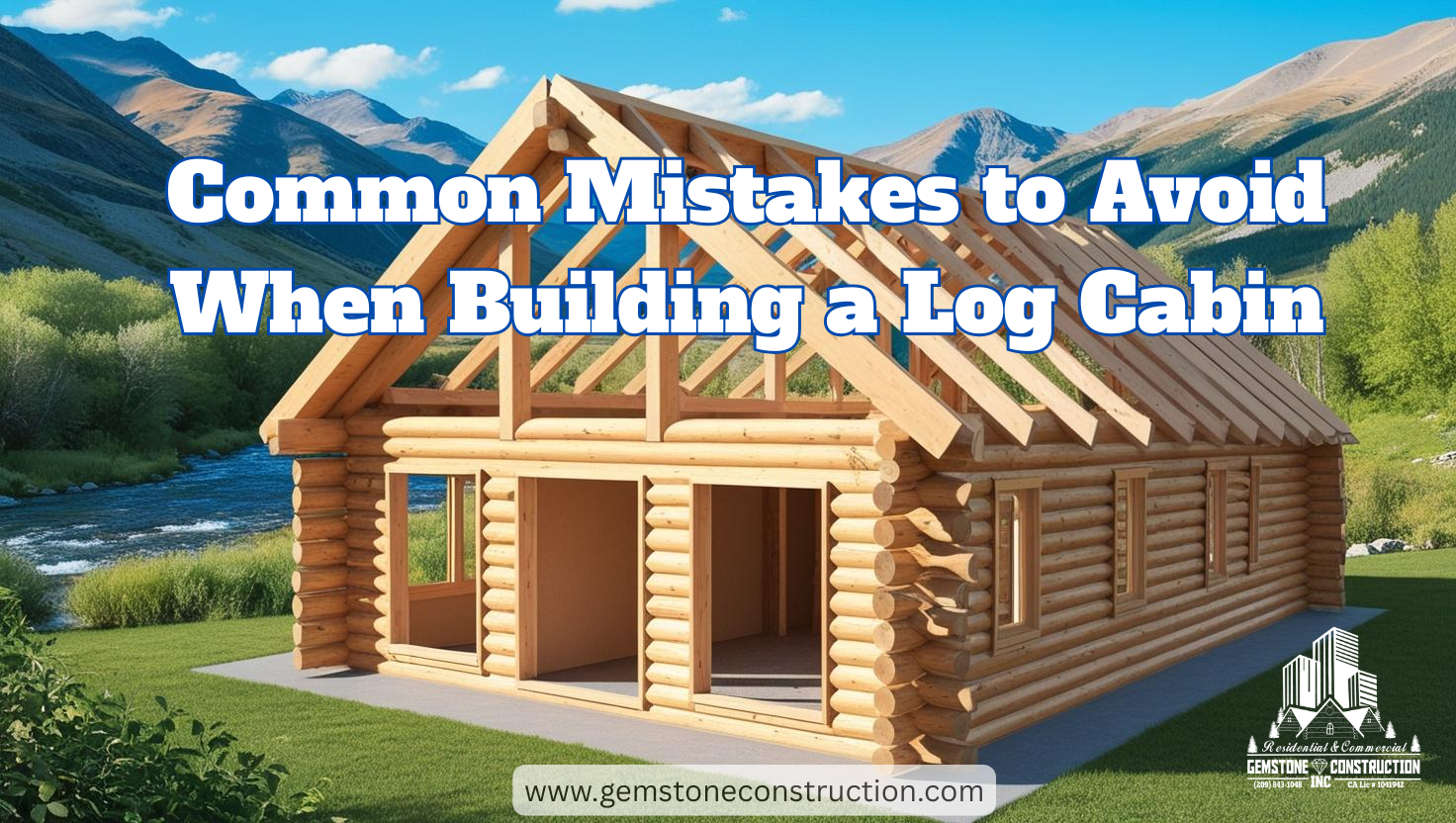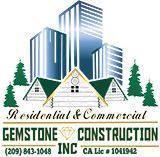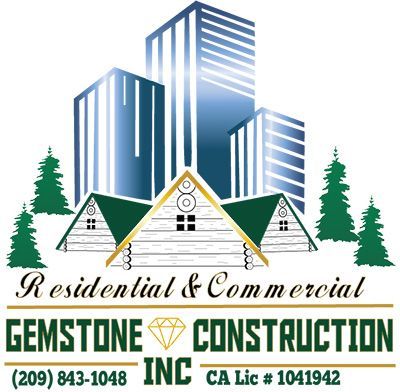GemStone Construction Blog
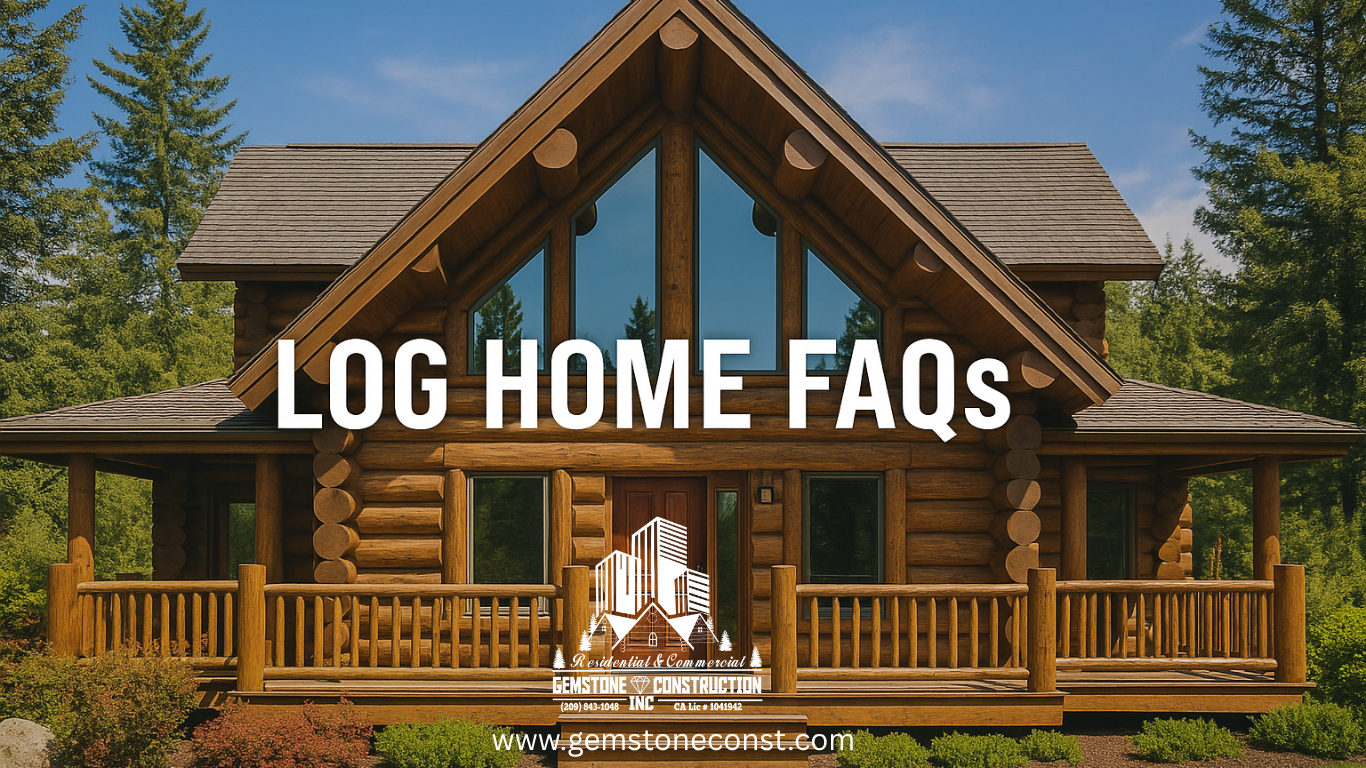
Log Cabin Wildfire Code FAQs
What Are California’s Wildfire Building Codes?
California’s wildfire codes are some of the strictest in the country. If you’re planning to build a log home, you’ll likely be building in a Wildland-Urban Interface (WUI) zone. This means your home must meet special fire-resistant construction standards outlined by CAL FIRE and enforced through Chapter 7A of the California Building Code. These requirements apply to roofing, siding, decks, windows, vents, and even landscaping.
For example, roofs must use Class A materials, and eaves must be enclosed. Windows should be dual-paned with tempered glass, and vents need to be protected from embers. All of this adds cost—but also provides vital protection. Fires can spread quickly in rural areas, so building a log cabin that meets these standards can make a critical difference in both safety and insurability. Insurance companies often require documentation of code compliance in order to issue or renew policies in WUI zones, making these design choices a financial necessity as well.
Log homes can meet these codes—many already do—but you need to plan for this in the design phase. Using ignition-resistant materials, adding defensible space around the home, and upgrading standard components are often enough to meet requirements. Gemstone Construction works with clients to ensure these materials are integrated during the early planning stages to avoid permitting delays or costly revisions later.
Building departments throughout California follow CAL FIRE guidelines to ensure safety within high-risk fire zones. Permitting a log home that fails to meet these codes can result in denied approvals, costly retrofits, or delays that extend your build timeline. That’s why we begin every project with a wildfire compliance checklist and collaborate closely with county officials. Our goal is to get your dream home approved—and built—without unnecessary setbacks. The time spent up front for log home site selection and to design a wildfire-compliant home can save you months of frustration during the permitting process.
What Is Defensible Space and Why Does It Matter?
Defensible space is the buffer zone you create between your log home and the wildland that surrounds it. This space slows or stops the spread of wildfire and gives firefighters a safe area to defend your property. In California, Public Resources Code 4291 requires 100 feet of defensible space around homes in WUI zones. This law affects all rural and semi-rural areas where wildfire risks are high.
Defensible space isn’t just about cutting grass. It includes spacing out trees, removing dead vegetation, trimming branches away from structures, and maintaining a cleared zone around propane tanks, decks, and outbuildings. The space is typically divided into zones—Zone 1 being the first 30 feet from your home, and Zone 2 extending to 100 feet. Each zone has its own set of requirements. Gemstone Construction helps clients understand and apply these guidelines to their property.
Following defensible space rules doesn’t just help your home pass inspection—it can also reduce your insurance premiums and improve your chances of surviving a wildfire event. Gemstone Construction offers guidance on how to plan for and implement defensible space into your site prep so you’re ready from day one. In fact, we often coordinate with local fire officials to ensure clients meet or exceed regional defensibility standards. Getting this right can be the difference between a total loss and a home that withstands a fast-moving blaze.
You’ll also want to avoid planting highly flammable vegetation like juniper, bamboo, or ornamental grasses near the structure. Instead, use fire-resistant native plants, hardscaping elements like gravel or stone walkways, and maintain vertical clearance between tree canopies and rooflines. Taking the time to plan this out early can make the difference between a total loss and a saved home in the event of a wildfire. And since California’s climate means year-round fire potential, maintaining your defensible space isn’t a one-time task—it’s part of responsible homeownership in the WUI.
What Materials Help a Log Cabin Pass Wildfire Codes?
The materials you use on a log cabin make a big impact when it comes to passing wildfire codes in California. While logs themselves are thick and slow to burn, they still need to be treated properly and paired with other fire-resistant components. That includes roofing, vents, eaves, windows, and siding details. Using smart combinations of materials can increase your home's chances of surviving a wildfire event.
Class A fire-rated roofing is required. This could be metal roofing, asphalt shingles rated for high fire resistance, or even treated wood shakes that meet Class A specs. For siding, logs should be treated with borate-based fire retardants or naturally resistant species like cedar or redwood. These materials not only hold up to heat longer but can also self-extinguish after exposure. Choosing the right type of wood and finish is critical.
Vents must be ember-proof and eaves need to be enclosed with non-combustible soffits. Windows should be dual-paned with tempered glass to prevent breakage under extreme heat. Decks, fencing, and railings should be made from ignition-resistant or non-combustible materials, especially when attached to the home. CAL FIRE has detailed guides on these requirements, and Gemstone Construction uses them to guide material selections and supplier partnerships.
One common misconception is that all natural wood materials are automatically disqualified under wildfire codes. This isn’t true. Many species of wood, including western red cedar and Douglas fir, perform well under flame exposure when treated properly. Gemstone Construction helps clients navigate the available options to achieve a look they love without compromising safety. You don’t have to sacrifice style to build smart and safe.
Gemstone Construction stays up to date on all WUI requirements and recommends materials that balance both performance and aesthetics. We know how to build beautiful log cabins that are also built to last—even in California’s toughest fire zones. When in doubt, we consult the latest CAL FIRE resources and partner with certified fire protection experts to ensure compliance and safety.
As a trusted source, CAL FIRE provides regularly updated guidance on WUI compliance and acceptable materials. Homeowners and builders can view detailed checklists and fire-safe recommendations directly at fire.ca.gov.
About Gemstone Construction
Gemstone Construction is a premier custom home and commercial building contractor serving Northern California, including the Sacramento area. Specializing in
custom log homes,
luxury home builds,
residential metal building construction, commercial construction and
commercial metal building construction. We bring craftsmanship, attention to detail, and personalized service to every project. From designing dream homes to building cutting-edge commercial spaces, our dedicated team ensures that each build reflects our clients' unique vision and exceeds expectations. Trust Gemstone Construction to transform your ideas into reality with integrity and excellence.
Learn more about Gemstone Construction
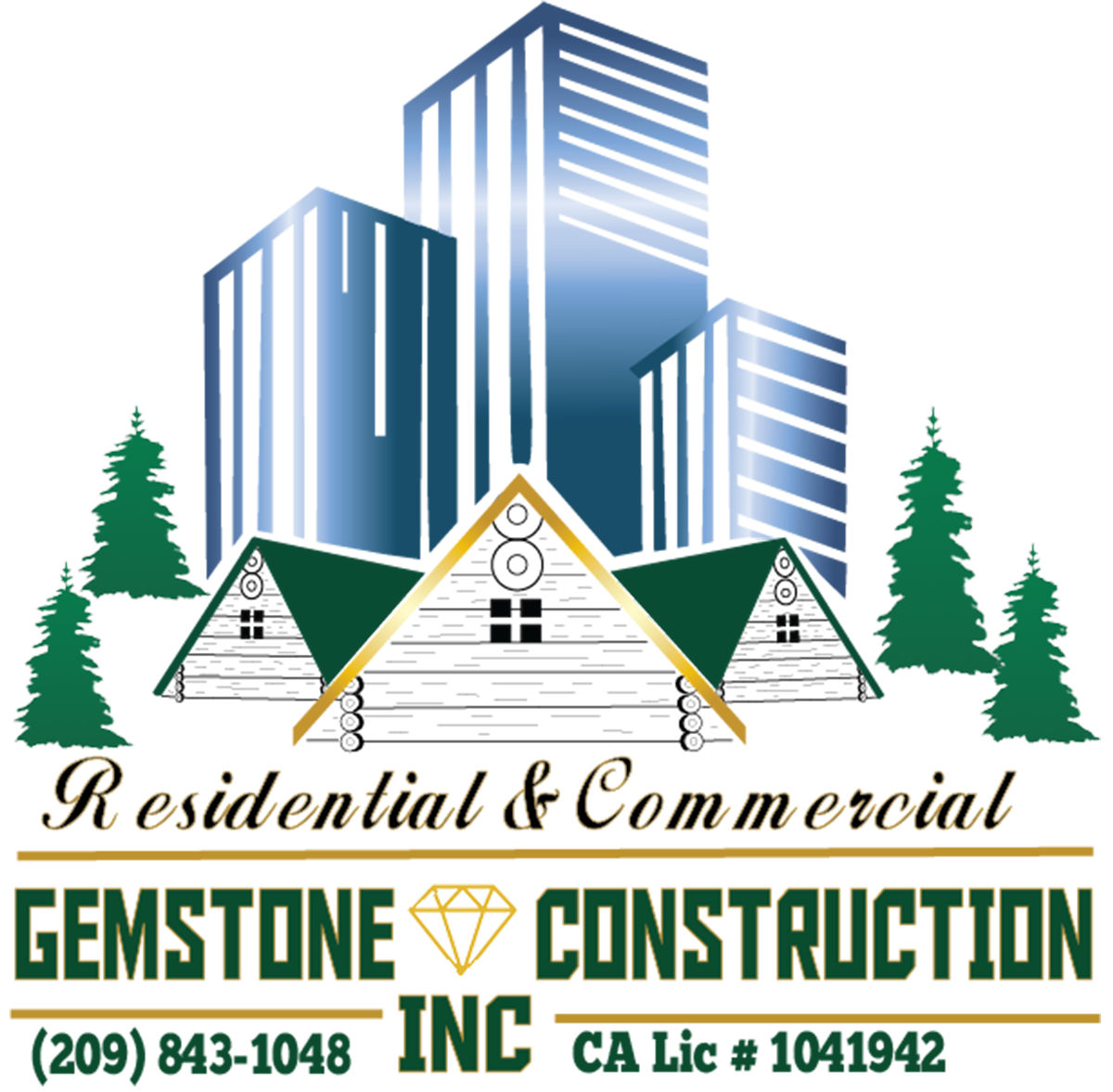
Contact Information


